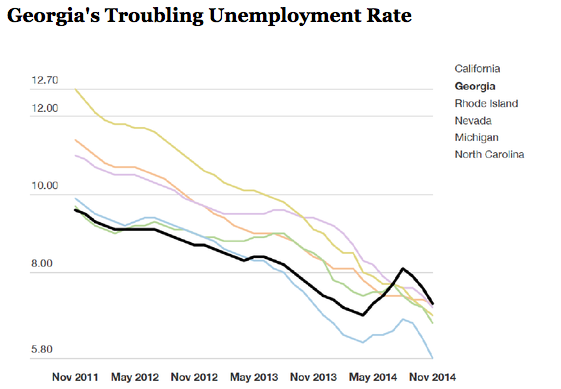The first talk I ever gave on the teenage brain was in 2007 at my sons’ school, Concord Academy. The principal, guidance counselor, and teachers had been so good to my kids and really helped me get them through a few chaotic teenage years, so I wanted to give something back. An idea that began as a single lecture turned into a two-day symposium with sessions for teachers, parents, and kids. Two friends and colleagues filled out the roster of speakers: David Urion, MD, an associate professor of neurology at Harvard Medical School who also treats children with cognitive impairments, including autism and learning disabilities; and Maryanne Wolf, the director of the Center for Reading and Language Research at Tufts University.
David is a neurologist and an expert in ADHD and, among other things, has spent a lot of time trying to understand the effect of learning disabilities on children and adolescents. Maryanne’s research and writing delve deeply into how children learn to read and the differences between boys and girls in language processing.
When it was Maryanne’s turn to talk to the students at the symposium, she opened with a quick demonstration of one of those differences. First she asked for two volunteers in the audience, a boy and a girl, both thirteen. Then she told them she was going to ask each of them to name as many words beginning with a certain letter as they could, given a time limit of one minute. The same thing happens every time she does this exercise with a teen audience. She always lets the girl go first, giving the boy even more time to get the hang of things. So the thirteen-year-old female volunteer stands up, and Maryanne says, “Name as many words as you can that begin with the letter P.” And off she goes—“pumpkin,” “pattern,” “public,” “popular,” and so on. By the time a minute is up the girl has rattled off thirty-five words. All this time the boy has been watching and preparing, right? So then Maryanne turns to him and says, “Okay, are you ready?” A few of the boys in the audience chuckle and snicker. Then Maryanne says something like, “Okay, the letter isM.” Immediately the boy starts off by looking around, as if he’s actually looking for cues for words, and he begins to struggle, hemming and hawing, and by the time a minute is up he’s lucky if he has named half as many words as the girl. I’ve seen Maryanne do this now on three separate occasions, and always with the same result. There is a reason, she explained, that the girl did so much better than the boy and that in a couple of years that difference will be negated. The ability to fire off the words actually relies on two distinct brain areas: the parietotemporal area, where speech and language are processed; and the frontal lobe, which controls decision-making.The task the two teens were asked to perform requires both language and rapid decision-making, and at the age of thirteen, girls are simply further along in having those two required brain areas wired together.
Scientists and psychologists have long known that there are differences in development between girls and boys and that girls’ language development, specifically reading and writing, is generally about one to one and a half years ahead of boys’. As parents of teenagers you all are probably nodding your heads right now. I’m not telling you anything you don’t already know. What you may not know is that these differences cannot all be laid at the feet of a difference in the speed of development. Why? Because there truly are anatomical, physiological differences between an adolescent girl’s brain and an adolescent boy’s.
Most of the variations in brain structure between males and females are minimal and relative to the difference in average body size between men and women. Others don’t correlate with any specific advantage or disadvantage. For instance, adult male brains are on average 6 to 10 percent larger than female brains, but there is data from Harvard researchers to suggest females have more connectivity between hemispheres. The differences can be even more exaggerated in childhood, when boys and girls of the same age can have as much as a 50 percent difference in brain volume during the steep part of the growth curve. All of this makes it difficult, and indeed foolish, to draw conclusions about differences in brain function based on differences in anatomy, at least when it comes to talking about males and females.
The fact that there are differences in neural anatomy between the two sexes, however, is undisputed. The differences are present in early fetal life, as hormones already have altered the destiny of brain regions that are set up to go either way in the embryo. This is called sexual dimorphism, and one region that is heavily altered by early differences in levels of the female hormone estrogen or the male hormone testosterone is the hypothalamus. This turns out to be very important because the job of the hypothalamus throughout life is to regulate hormones in women and men.
Sandra Witelson is a professor of psychiatry and neuroscience at McMaster University in Ontario, Canada, and owns the world’s largest collection of normal brains, with a total of more than 120. In thirty years of research she has consistently found differences between male and female brains, but the differences are subtle and the relationship of those differences to function is often unexpected. For instance, the size of the corpus callosum, the strip of neural tissue that links the left and right hemispheres of the brain, appears to be linked to verbal ability on IQ tests in women but not in men. (And in adolescence a girl’s corpus callosum is about 25 percent larger than a boy’s.) In another finding, memory in males was correlated with how closely the neurons were packed together in the hippocampus, but this was not true of females. Studies involving cognitive tasks do not show gender-based increases or decreases. What all this research underscores is the need to be intellectually open when it comes to making gender-specific delineations between male and female brains.
More recently, Raquel Gur and her colleagues at the University of Pennsylvania have used a combination of MRI techniques—diffusion tensor imaging (DTI), which maps physical connections in the brain; and fMRI, which maps how synchronized brain regions are when they activate—to examine the connectivity between brain areas in women’s versus men’s brains. When Gur and her colleagues saw one brain area turn on or activate another, they drew lines between them, mapping the “connectome” of the brain. They compared the amounts of connectivity between the two hemispheres and found that, while the vast majority of connections were the same between men and women, men have more connections within hemispheres, while women have greater connectivity between hemispheres.
At the same time, it’s indisputably true that at least in adolescence there are real differences in certain brain functions between males and females. Because of their larger corpus callosum, which means better communication between the brain’s two hemispheres, girls may have a greater ability to switch between tasks than boys. A friend of mine, for instance, who also has two sons—one still in his teens, the other just barely out of them recently threw up her hands in that classic parental gesture of frustration and surrender. My friend’s daughter was about to get married somewhere in the Midwest. She’d planned the wedding and set the date a year in advance. Everyone was flying in for the event, so of course everyone needed a government-issued photo ID to get on the plane. But a few days before the event the bride’s brothers were sent scrambling. My friend’s younger son was staying in Vermont at the time, and he suddenly realized his driver’s license had expired and his passport was at his father’s house in Massachusetts. His older brother, who was living in Washington, DC, lost his wallet in a taxi, and he, too, had left his backup ID, his passport, in Massachusetts. But at least he notified his father of his problem a few days in advance enough time, or so we thought, for his father to express-mail the passport. Alas, the older boy claimed he never received the package and so still couldn’t get on the plane. In fact, the only reason he eventually did get on was that he got a signed affidavit from his employer verifying his identity! Both boys made it in time for their sister’s wedding—barely!
We know from earlier chapters that both males and females lose gray matter between the ages of six and eighteen and both gain white matter throughout adolescence and well into their twenties. While boys gain white matter faster than girls, they are not necessarily using the same parts of their brains when they perform the same cognitive tasks. In 2008, researchers at Northwestern University and the University of Haifa in Israel collaborated on a study of how boys and girls process language. In general, adolescent females have superior language abilities compared with adolescent males. When the scientists gave their female subjects complex auditory and visual language tasks, the activated areas of their brains were associated with abstract thinking through language, and their level of ability was correlated with degree of activation. The same correlation held true for boys, but their accuracy depended not on the abstract language areas but on their senses of hearing and sight. There have been several studies that show that male and female adults use different parts of the brain to sound out words or read aloud: different paths can lead to the same result.
The amygdala, where emotions generally arise, develops about eighteen months sooner in girls than in boys in early adolescence. The hippocampus also develops earlier, and there are differences between males and females, with the two sides of the hippocampus being asymmetrical in men and symmetrical in women. This is consistent with other data showing higher levels of side-to-side connectivity in females in general. Both the amygdala and the hippocampus are in the limbic system, and their function can be affected by hormones.
How many times did I want to pull my hair out when my boys would mope around the house and have nothing to say at mealtime, all because they’d been left off a party list, lost a sports competition, or broken up with a girl? It was like extracting teeth to get them to tell me what they were thinking and feeling. I envied some of my friends whose teenage daughters, while firmly seated in that emotional roller coaster called adolescence, still could open up to their mothers or fathers about their feelings.
Both boys and girls show large swings in their emotional behavior during adolescence. In part, they are experiencing for the first time the effects of hormones, not yet having learned how to control them. This control will eventually involve the frontal lobes, which will dampen the swings, but this area, we know, is not yet fully available to them. They are on a steep learning curve! A teenager faces double trouble in terms of trying to process certain emotional experiences, especially when the brain structure responsible for integrating emotional information with memory is still under development. Teens react more or less instinctually to the events around them precisely because those connections between the emotional and intellectual parts of the brain, including memories of similar events in the past, are still being formed. But in this regard, girls may have a slight edge over boys, at least in early adolescence.
When we think about gender differences, we often think about emotion. However, there are other ways that the different rates of brain development manifest themselves. An obvious one is organizational skills. Organization requires brain connectivity and integration, not just raw intelligence and synaptic power. Myelination plays a huge part in this, and as we have said earlier, it requires the better part of the first three decades of life to be fully completed. The time of greatest gender disparity in this process occurs during adolescence.
Many learning specialists will testify that boys take longer to develop their organizational and attention skills, and the practical implications for educators can be profound. A good friend of mine is an educational consultant, and her job is to place students in private schools and colleges. For many teenagers, especially boys, this can be a difficult process. The steps required to gain acceptance to a good school or college are complex. Thirty years ago, an application could be submitted to Harvard, UCLA, or NYU without much hand-wringing; today, by contrast, the steps to enter such schools are numerous and the competition is steep. For boys, who lag behind girls in terms of organizational skills, the process is that much harder.
My friend the consultant told me the story of a sixteen-year-old boy named Ryan she’d recently been counseling. He was a star hockey goalie on his high school team, and at the start of his junior year coaches from several excellent private colleges in the Northeast contacted him and asked him to apply. Naturally, they requested his grades and test scores. Ryan, apparently, is an intelligent and highly motivated student. However his grades, in the C+ to B range, were probably too low for acceptance to these schools, even with a coach’s endorsement. When the consultant asked him about his grades, he complained about the “three hours of homework every night” and his many other commitments, such as volunteer work and varsity sports, which seemed to make it harder for him to succeed at academics. His mother told her, “Truth is, Ryan has trouble getting his homework in. He’s disorganized and waits to the last minute to study for tests; then he’ll spend too much time on his history, for example, and completely forget the math test.”
Ryan’s academic approach is very common for a teenage boy because a rigorous high school curriculum these days requires superb attention, planning, and organizational skills, all of which develop more slowly in boys. This hit home for me with Andrew, who was challenged early in high school to figure out how to be better organized in order to get his work done. It took him a year to turn things around, and during that time I kept in close communication with his high school guidance counselor. Andrew knew it was up to him to take responsibility for his homework, for his sleep habits, and for the distractions that kept him from studying. With gentle nudges at school and at home, oversight, and assistance, he not only became more disciplined about how and when and where he studied but also became more confident.
I was reminded of how different it is in England, the country of my parents’ birth, where all students must take a common entrance exam at eleven years of age; if they don’t do well they can’t go on to A levels, and this means they don’t go to college. Education isn’t a right so much as a privilege in the United Kingdom, and because not everyone gets to attend a university, education becomes one more caste system. It’s truly a shame that in England and so many other countries, before a child even reaches puberty, he or she has already been tested, evaluated, and judged to be either intellectually worthy or unworthy of higher education. If my sons at ages eleven or twelve or even fifteen or sixteen had been subject to this kind of life-determining “tracking,” I’m not sure they would be the highly successful college-educated men they are today. There is so much on the line for our teenagers, it seems incomprehensible that their futures should rest on an evaluation of their not yet fully developed brains.
Given the current statistics—that more girls have higher average SAT scores than boys and that girls are more likely to complete high school and to enroll in both undergraduate and graduate educational programs—things are definitely changing from prior generations. Still, stereotypes are sometimes hard to break. Break them, however, we do.
What stereotyping confirms is that our ideas about gender differences are almost always behind the times—and behind science, too. Even today, many people will cite apparently scientific evidence for how good men are at visualizing space; they’re logical and linear. Women are good at intuiting; they are more creative and empathetic and see things holistically. My personal observation is that these black-and-white stereotypes are inaccurate, and there is an ever-increasing amount of data to back that up. In middle school, for in-
stance, 74 percent of girls express interest in science, technology, engineering, and math (STEM), according to Girls Who Code, a national nonprofit organization that was launched in the spring of 2012 and seeks to close the gender gap in science, engineering, and technology. Girls Who Code is supported in part by Twitter, Google, General Electric, and AT&T, and fosters programs that “educate, inspire, and equip high school girls with the skills and resources to pursue computing careers.” The problem with the numbers of girls
interested in these subjects, says the organization, is that they peak in middle school. By the time it comes to choosing a college major, only 0.3 percent of high school girls select computer science. Janet Hyde, a researcher at the University of Wisconsin–Madison, found that girls who grow up believing boys are better at math—something parents and teachers persist in thinking—are more likely to avoid the harder math courses. Consequently, this can result in a self-fulfilling prophecy and may contribute to the gender gap at the highest levels of math achievement, which are reached disproportionately by men.
The numbers, however, have nothing to do with aptitude, especially now. Hyde also looked at annual math tests that were required by the No Child Left Behind law in 2002. Twenty-five years ago, girls and boys did equally well in elementary school, but boys far outstripped girls by the time they reached high school. In their recent study of more than seven million children’s test scores in ten states, Hyde and her team found no difference between boys and girls in either middle school or high school. For today’s teenagers, it seems that the field is starting to equalize in terms of education, making it all the more important that we get gender-based differences in adolescent learning right.
The differences are not substantial enough to preclude children of either sex from doing and becoming whatever they want in life. However, for me the differences do raise some questions as to whether in certain circumstances we should consider some gender based
high school curricula. Given the couple of years’ disparity between peak cortical volume in girls versus boys, one might predict that girls, who reach specific levels of cognitive development before boys, could benefit more from math and science courses at earlier ages.
Ultimately, differences in the time, size, and rate of brain change between males and females and the effects of sex steroids are too complex to let us make conclusions about variations in brain function between the sexes. Despite all the books and articles and TV programs detailing the differences between a “pink” brain and a “blue” brain, no causal link has ever been established between gender-based variations in brain development and the cognitive abilities of females versus males.
What scientists do know is that the brain, at any time in its life but especially during adolescence, is a product of both nature and nurture, including all the exposures, stresses, and stimulations of a person’s environment. One important observation is that in the developing world, puberty is being reached at ever-earlier ages, and the theorized causes of this have ranged from environmental effects to advanced nutrition to steroids in our food supply, but the jury is still out. What relevance this has to brain maturation is very unclear and likely to be a subject put under the microscope in the coming decade. While people can argue about toxicity and dangers of certain environmental chemicals, what is incontrovertible is this: What we learn and experience, the good and the bad, the mild to the severe, will change our brains.















































